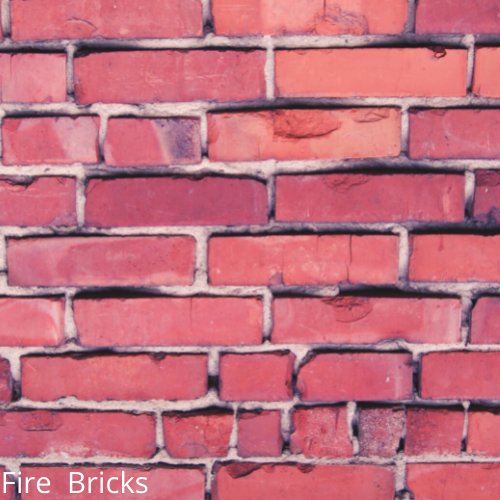Fire bricks:
These bricks are made of fire clay. The process of production is the same as that of ordinary clay bricks. Burning and cooling fire bricks is done gradually.

Those bricks are usually white or yellowish-white in color. The weight of a fire-brick is about 3 to 3·50 kg. These bricks can resist high temperatures without softening or melting.
Hence, they are used for the linings of furnaces and the construction of boilers, chambers, chimneys, etc.
Following are the varieties of fire-bricks:
( 1) Acidic bricks
(2) Basic bricks
(3) Neutral bricks.
(1) Acidic bricks:
These bricks are used for acidic lining.
Following are the various types of acidic bricks:
(i) Ordinary fire-bricks:
These bricks are made of natural fire clay and they provide excellent material for acidic refractory lining.
(ii) Silica bricks:
These bricks contain about 95 to 97 percent silica. A small amount of lime from 1 to 2 percent is added to work as a binding material.
These bricks are molded under pressure and burned at high temperatures. Silica bricks can withstand high temperatures up to about 2000 ° C.
(2) Basic brick:
These bricks are used as the baselining and the original refractory materials are used in the manufacture of such bricks. Magnesia bricks are made of lime and magnesia rocks. Dolo- 1 mite can fit into the making of these bricks.
(3) Neutral bricks:
These bricks are used for neutral lining.
Following are the various types of neutral bricks:
(i) Chromite bricks:
Those bricks are prepared from a mixture of chrome, iron ore, ferrous oxide, bauxite, and silica. Such bricks are
unaffected by acidic or basic actions.
(ii) High alumina bricks:
Those bricks contain a high percentage of alumina and they are found to be more inert to slags.
Also Read: Corrosion of steel in concrete

1 thought on “Fire bricks | Varieties- Civil learners”